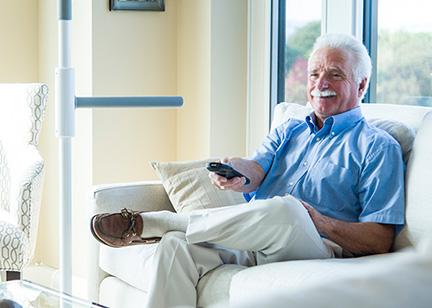Adaptations For Safer, More Accessible Living Spaces.
As a healthcare professional, your role in creating safe, functional environments is essential to supporting independence and preventing injury. This section is designed to equip you with practical tools and strategies to assess and adapt home environments effectively.
Explore our room-by-room breakdown of common safety risks, along with evidence-based solutions and product recommendations. Whether you’re planning for aging-in-place or hospital discharge transitions, this resource will help you make informed, impactful recommendations that empower your clients to live confidently and safely at home.

Bathroom Safety
Bathrooms are high-risk due to slippery surfaces, tight spaces, and minimal support. Transfers often involve complex movements like stepping over thresholds or balancing on wet surfaces. Support surfaces and shower seating promotes safer movement.
Learn More

Bedroom Safety
Bed transfers are risky, especially at night with low lighting and reduced alertness. Falls often occur during nighttime toileting. Tools like assist poles or floor-to-ceiling supports offer stability for key transitions. They promote independence and reduce the need for overnight help.

Living Room Safety
Low furniture, soft cushions, and few stable surfaces make the living room deceptively risky. Sit-to-stand transfers can be hazardous for those with weakness or balance issues. Support bars and transfer poles support without disrupting the familiar setup.
Learn More

Stair Safety
Stairs pose serious fall risks due to uneven steps and limited support. These falls are often severe. Handrails, landing supports, and extended grips improve safety at transitions. For clients with poor endurance or coordination, adaptive aids make stairs more manageable.
Stay Informed. Stay Equipped.
Get monthly updates with new clinical tools, product education, and home safety resources — straight to your inbox.